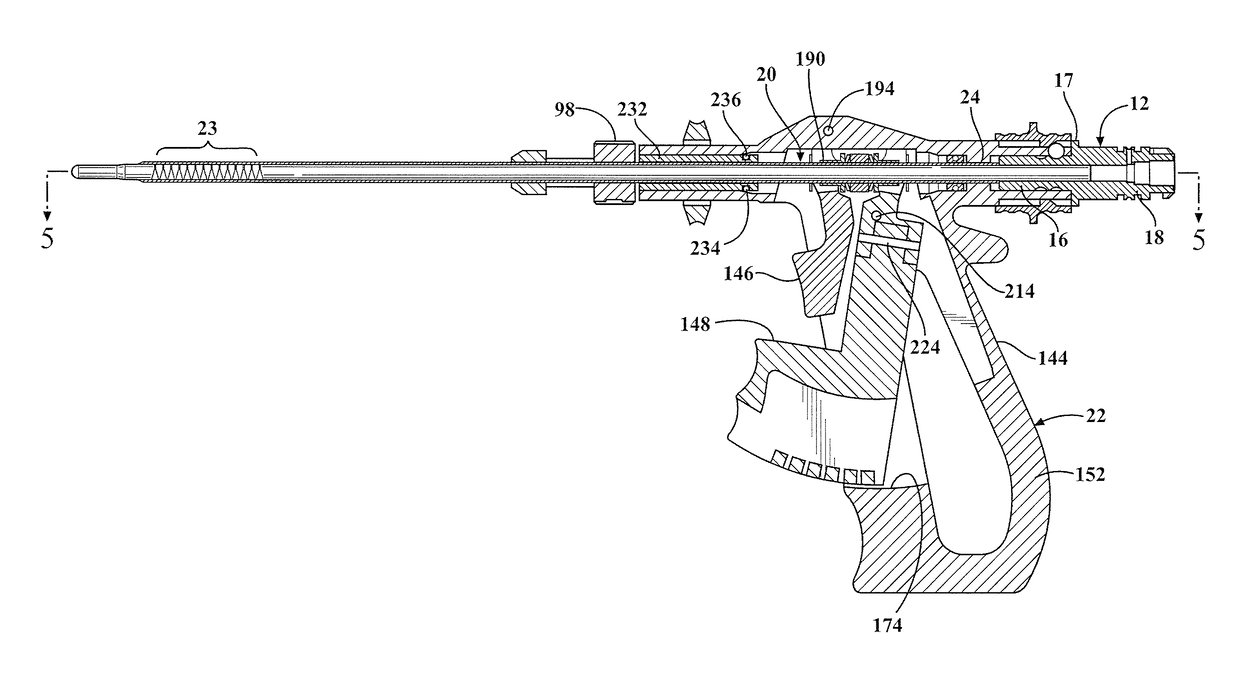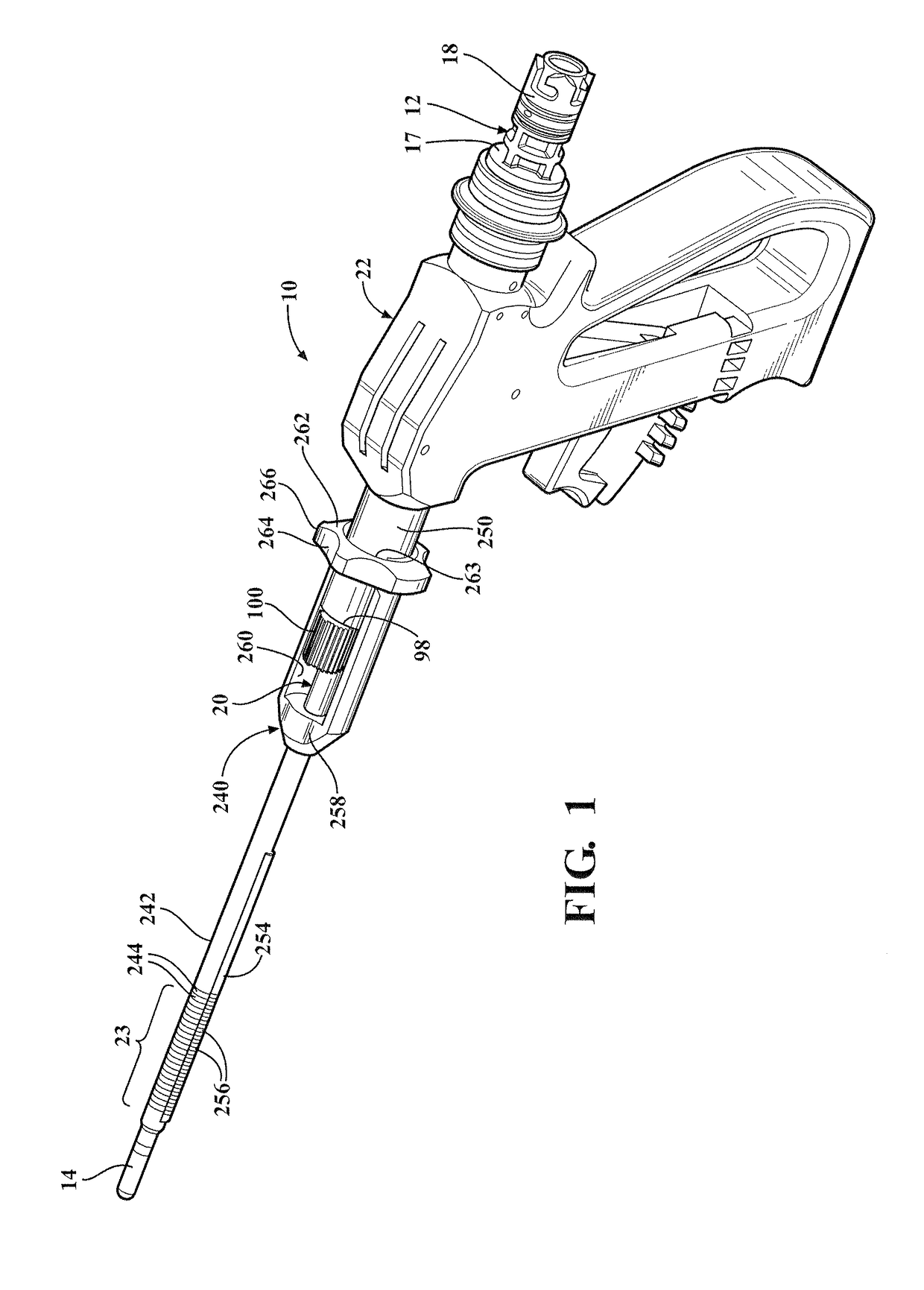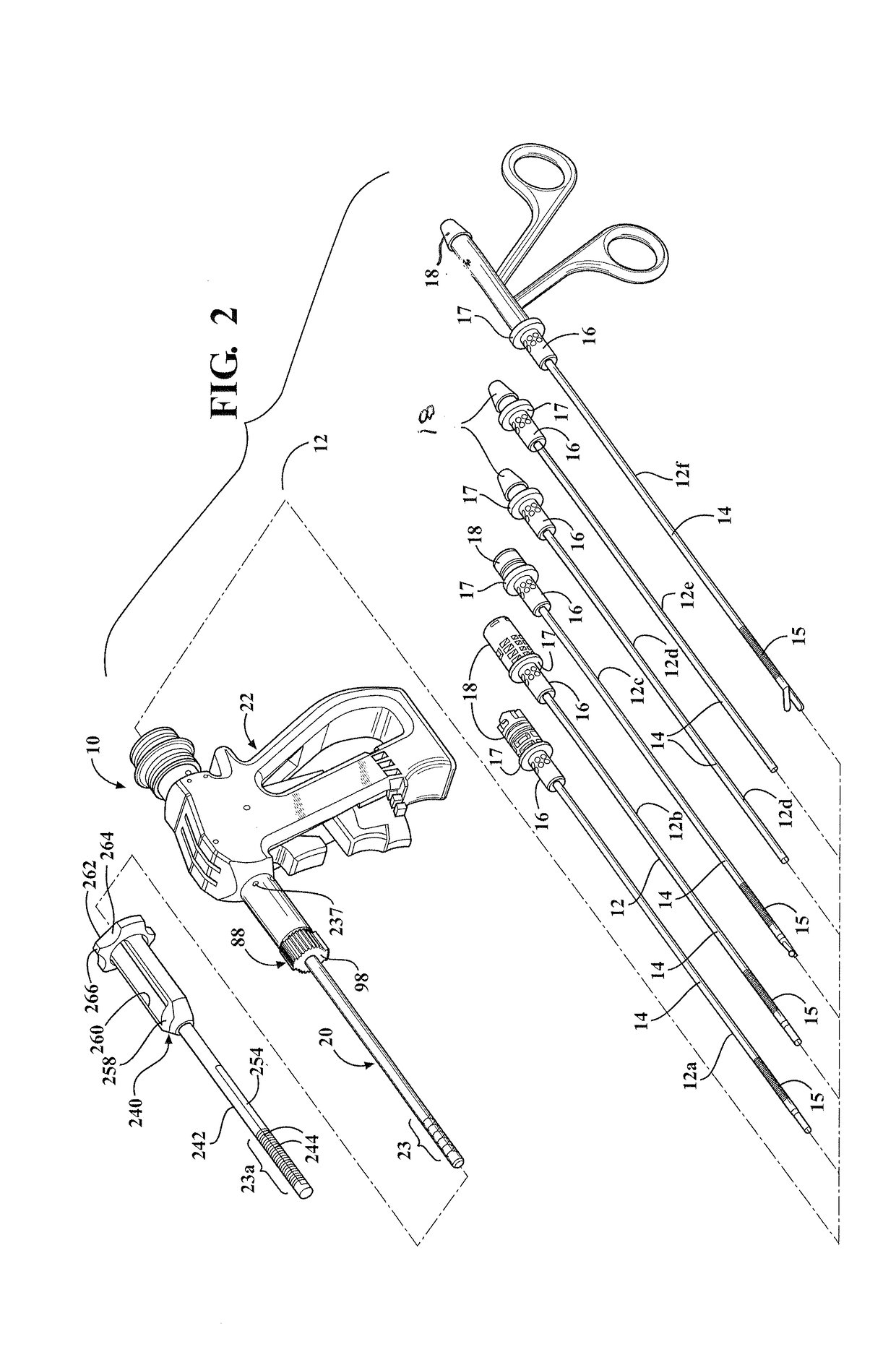Surgical Instrument With Articulation Region
a surgical instrument and articulation technology, applied in the field of surgical instruments, can solve the problems of added morbidity, surgeons lack of tools, and the inability to adapt to many applications of hinge joints
- Summary
- Abstract
- Description
- Claims
- Application Information
AI Technical Summary
Benefits of technology
Problems solved by technology
Method used
Image
Examples
Embodiment Construction
[0067]Referring to FIGS. 1 and 2, a surgical instrument 10, according to the present invention, is shown for use in a medical procedure for a patient (not shown). As illustrated in FIG. 2, the surgical instrument 10 is used with one or more working tools 12. The surgical instrument 10 is capable of receiving and releaseably securing one of the working tools 12.
[0068]Exemplary working tools 12 may be a flexible bur 12a, a flexible bur 12b, a flexible high speed bur 12c, a flexible suction device 12d, a flexible internal imaging and suction device 12e, and / or a flexible manual instrument 12f such as graspers, bipolar forceps, etc. Powered tissue devices 12a, 12b, and 12c and manual instrument 12f comprise a shaft portion 14 and a local flexible region 15 along the shaft portion 14 near a distal end. The flexible suction device 12d and flexible internal imaging and section device 12e of the working tools 12 are devices that are configured to flex along at least a portion, of the entire...
PUM
 Login to View More
Login to View More Abstract
Description
Claims
Application Information
 Login to View More
Login to View More - R&D
- Intellectual Property
- Life Sciences
- Materials
- Tech Scout
- Unparalleled Data Quality
- Higher Quality Content
- 60% Fewer Hallucinations
Browse by: Latest US Patents, China's latest patents, Technical Efficacy Thesaurus, Application Domain, Technology Topic, Popular Technical Reports.
© 2025 PatSnap. All rights reserved.Legal|Privacy policy|Modern Slavery Act Transparency Statement|Sitemap|About US| Contact US: help@patsnap.com



